Exploring an abandoned psychiatric hospital with morgue in St. Thomas, Ontario
Introduction
In August of 1937 construction began on a hospital in St. Thomas, Ontario which became known as the Ontario Government Hospital, St. Thomas. It was built on land belonging to six farm families. The 460 acres of land was able to provide crops for the facility’s food and produce.
The hospital opened on April 1, 1939 and took in its first 32 patients. By August the number of patients was close to 1,100 people. The maximum capacity is said to have been reached in 1958 with 2,238 patients. At the time the St. Thomas Psych had a reputation for being the finest mental health hospital in Canada due to its modern design. It also provided jobs during the recession.
World War II
When World War II was declared, the hospital was leased to the Department of National Defence. The agreement took effect October 23, 1939. The last patients were transferred out on October 31, 1939. Supplies for the R.C.A.F. began arriving three days later.
Sixty thousand men and women from every country in the British Commonwealth, as well as American volunteers with the R.C.A.F. were trained here. The school was known as, “No. 1 Training and Technical School”.
The nurses residence was converted to house R.C.A.F officers and their family.
The school was equipped to handle more than 2,000 students at a time. They offered six-month courses for aircraft electricians and aero-engineers, air-frame and instrument mechanics and training for fabric and sheet metal workers.
With the local economy now being increased, St. Thomas responded with drop-in centres offering free coffee and sandwiches for R.C.A.F. personnel, dances, and other activities.

Elgin County Archives, Scott Studio

By October 1942, 20,000 ground crew personnel had graduated from the school. In 1944, capacity for treating returning wounded soldiers was increased from 200 to 700 beds.
Patients were relocated to other parts of the province. The hospital was returned to the Ontario Department of Health and reopened to patients in 1945.

Patients were able to take part in the farming and food production process which contributed to feelings of self-worth and contributing.
Beginning in the 1970’s it was decided that rather than confine people to institutions, that through mental health transformation patient care should shift from that of an institutional model to helping patients learn to live productive lives in the community. It offered patients hope and recovery.
There was a nurses residence on the other side of the highway (Sunset Drive) and underground tunnels provided transportation. A bicycle at each end of the tunnel allowed nurses to quickly make their way from one end to the other.
1988 Incident
In 1988 two patients at the hospital were given day passes to allow them to work. One patient earned enough money to purchase a car. On March 31, 1988 one of the two men told his boss that he wanted to “leave early and get laid”. The two men drove to London where they found a fourteen year old girl waiting for a bus. She was abducted and beaten in the car on route to the factory where one of the men worked. The girl was thrown into a river where she later walked to a nearby house for help.
Transition
The St. Thomas Psych Hospital was taken over by St. Joseph’s Health Care in London as part of a reorganization initiative ordered by the Health Care Restructuring Commission (HSRC) in 1997. HSRC directives called for the divestment of a certain number of long term specialized inpatient beds from St. Joseph’s to hospitals across southwestern Ontario and the construction of two new specialized mental health care facilities, one in London and one in St. Thomas. The report recommended significant transitional funding to build community resources that would offset the eventual closure of beds.
A modern state of the art hospital was built on the grounds of the existing hospital in St. Thomas. It opened in June of 2013.
The hospital has taken on several names: Ontario Hospital, St. Thomas Psych and St. Thomas Regional Mental Health Care.
The colours blue and green were often used on walls as they created a calming atmosphere.
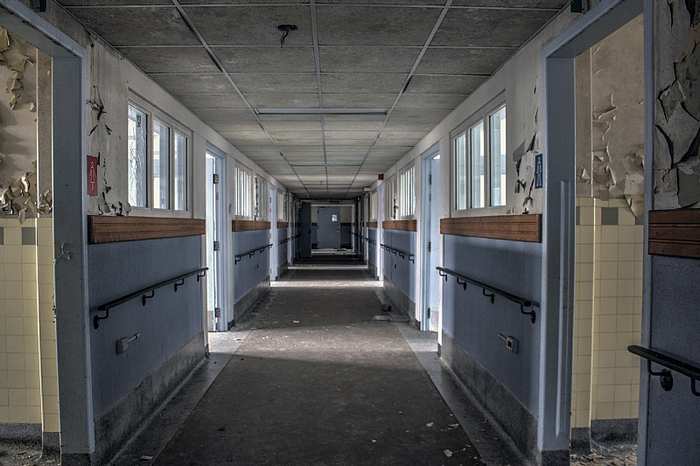
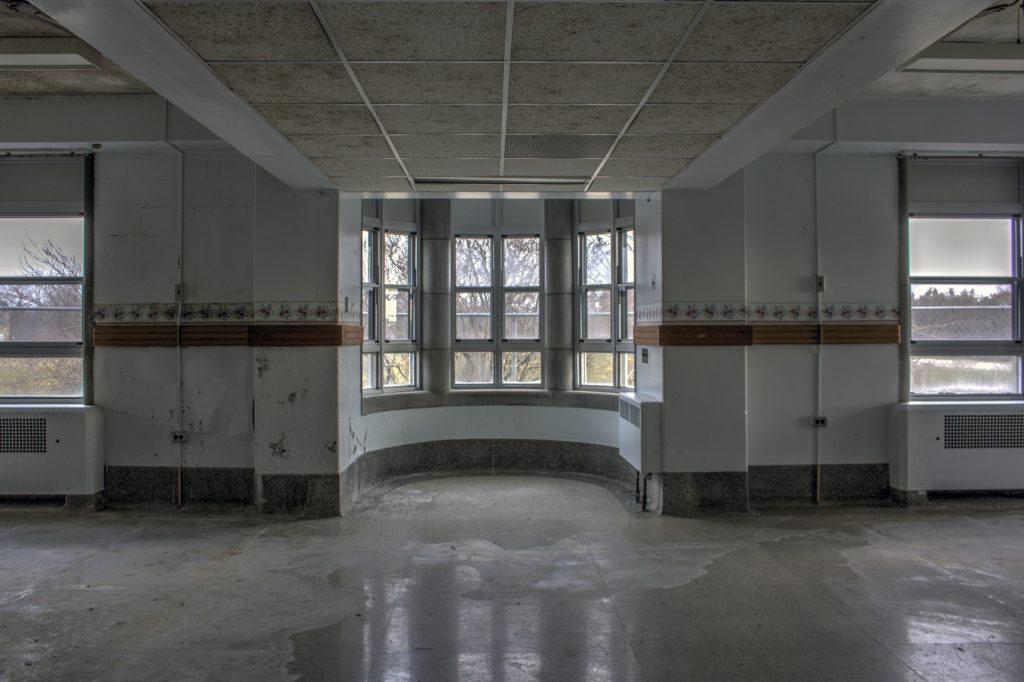
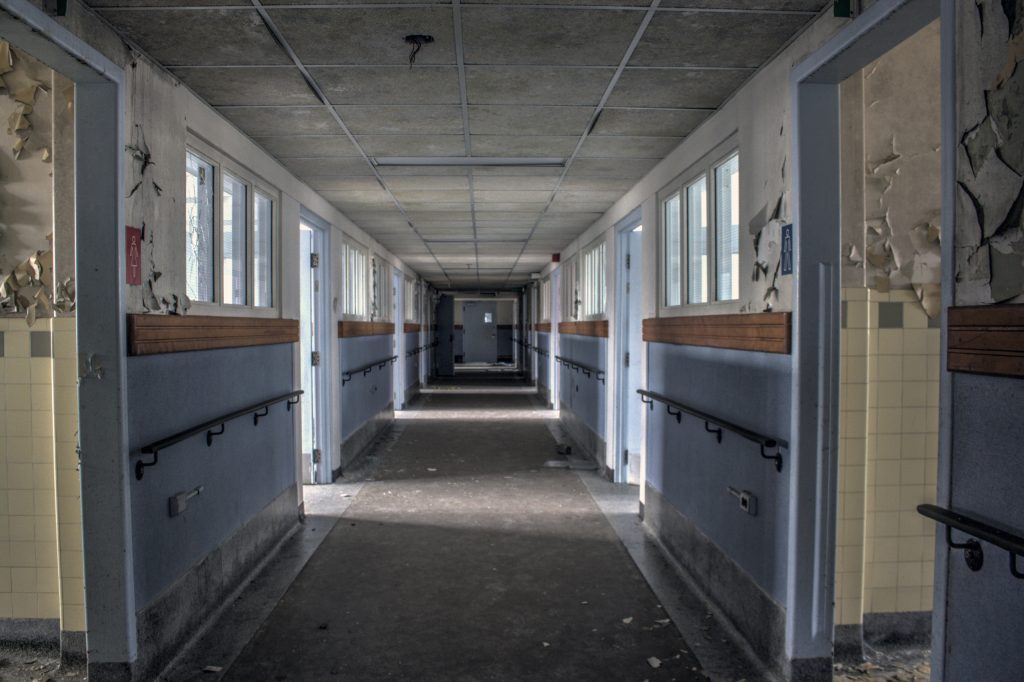
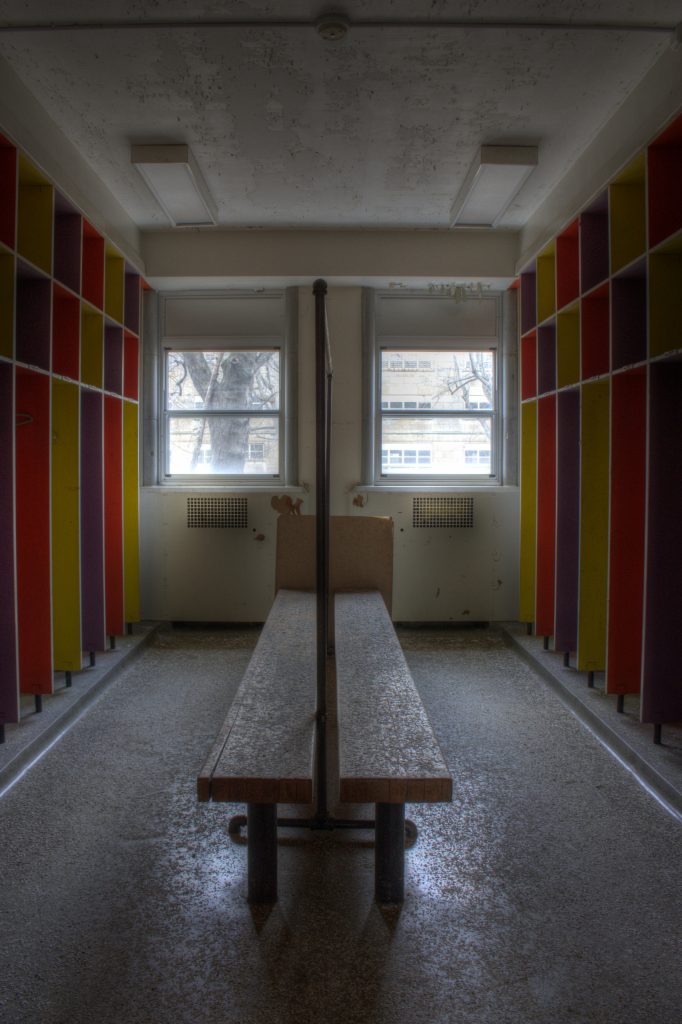
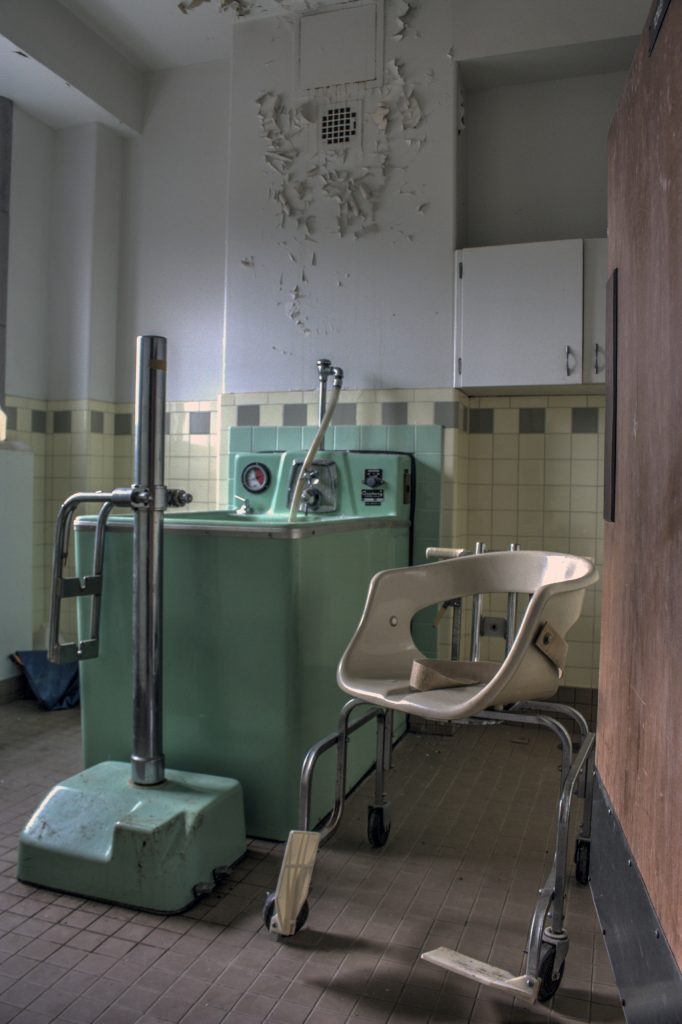
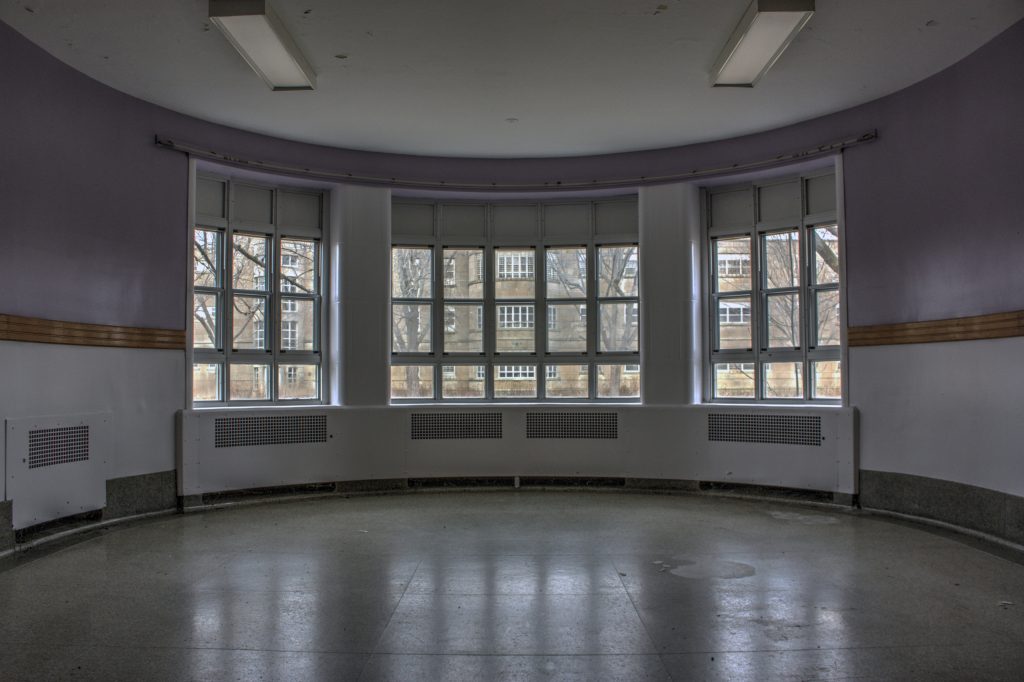
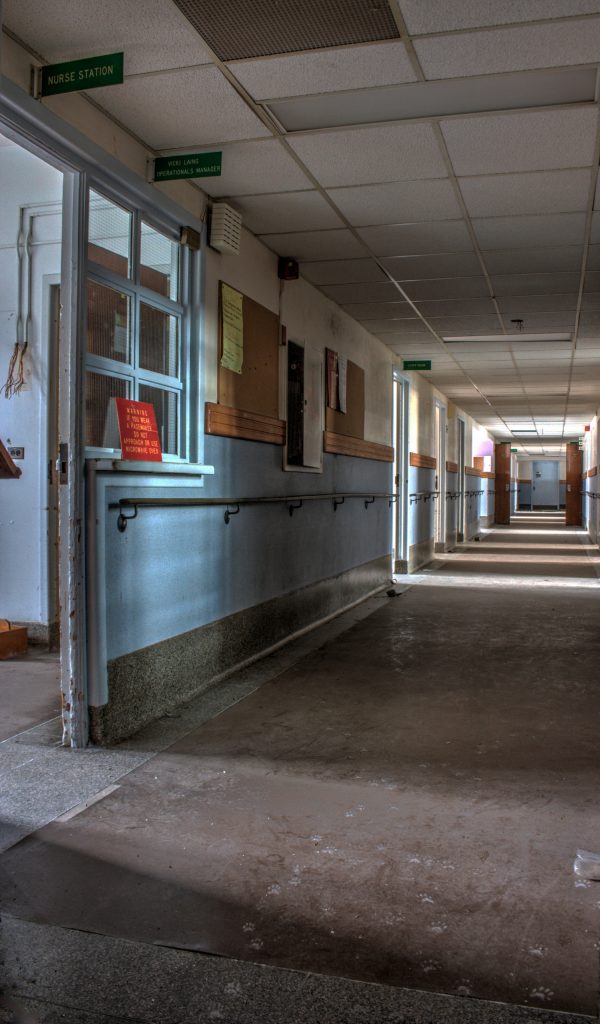
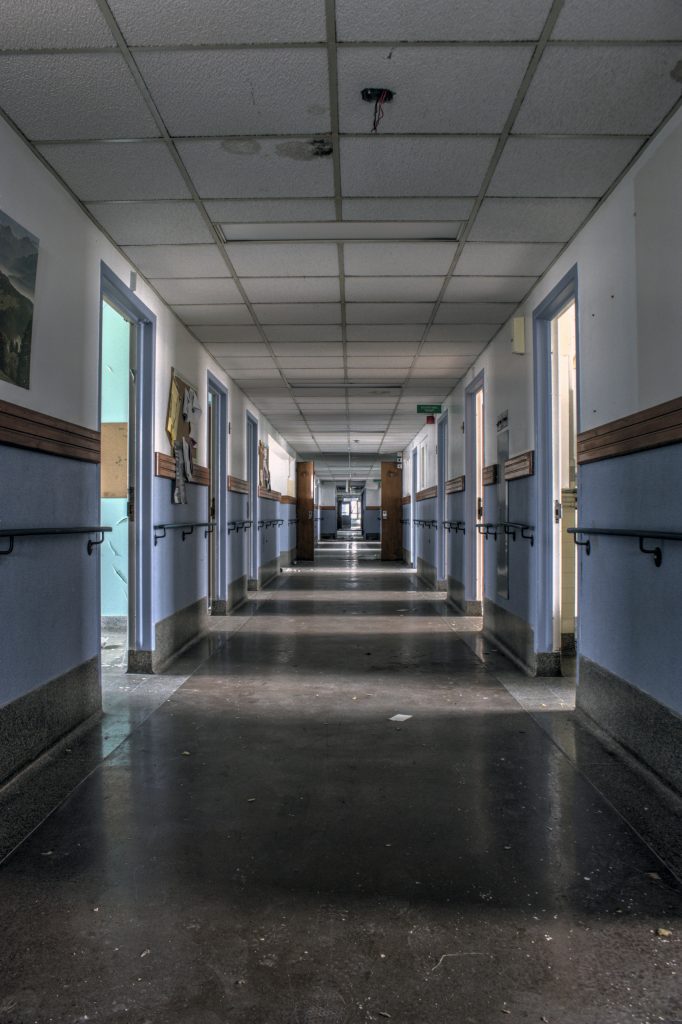
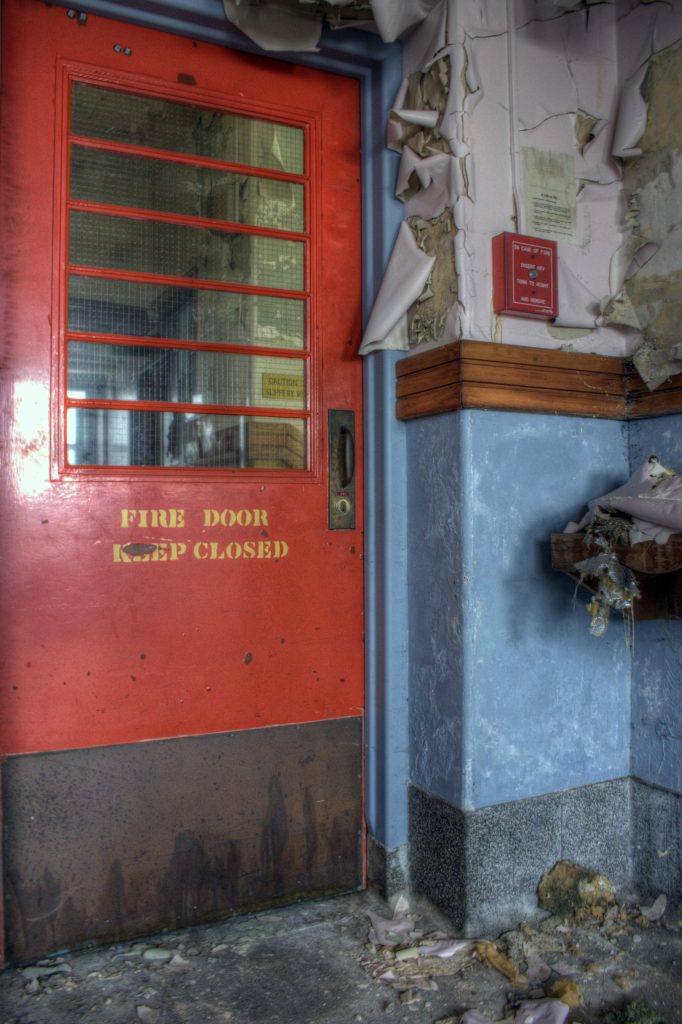
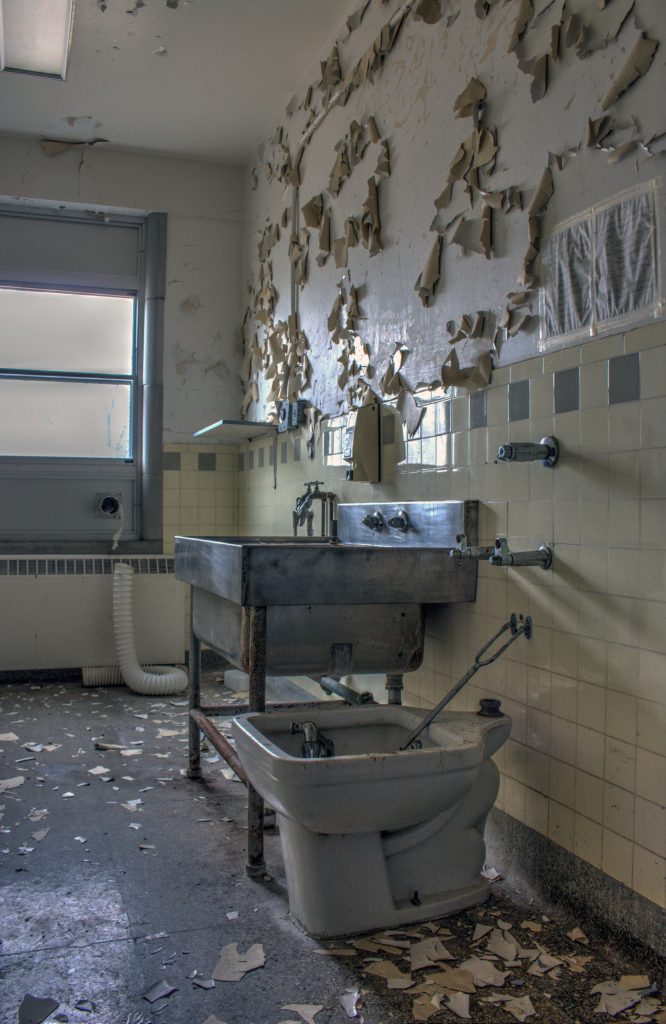
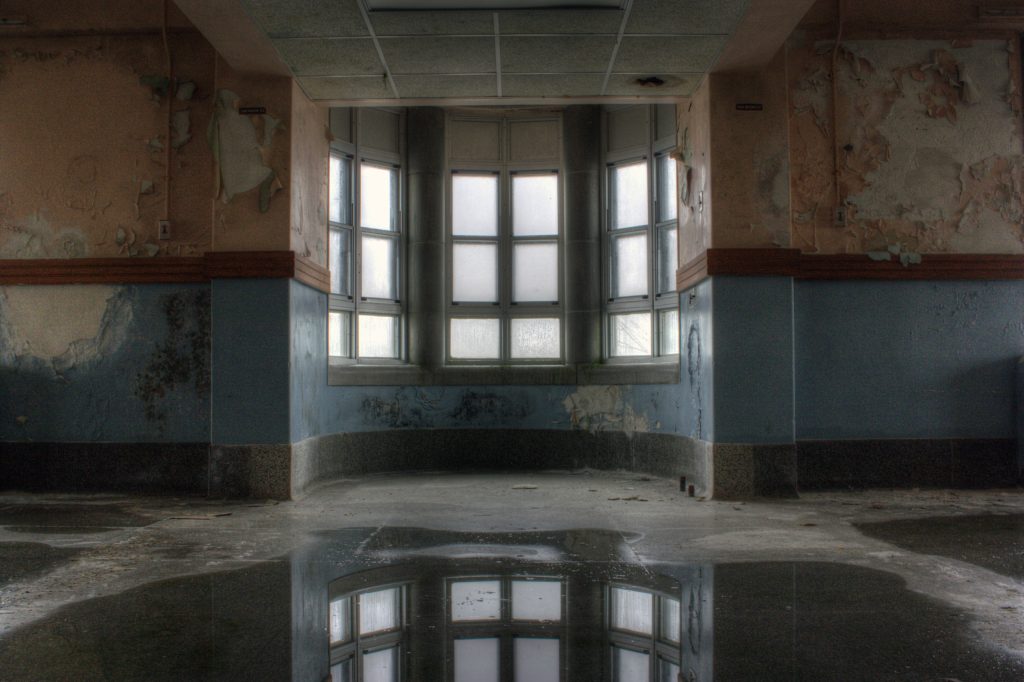
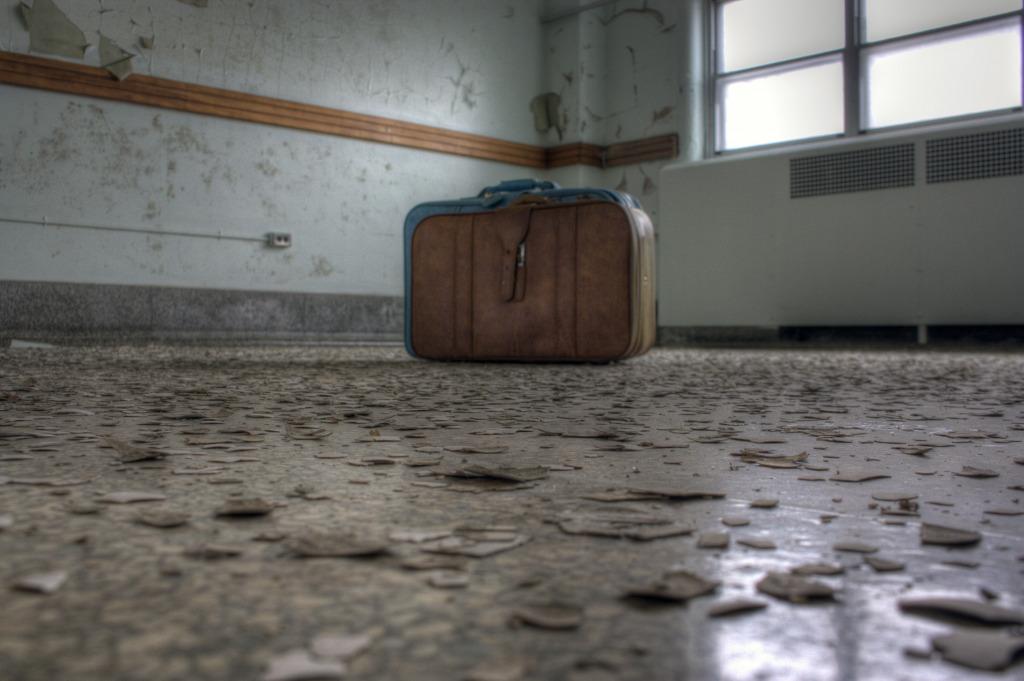
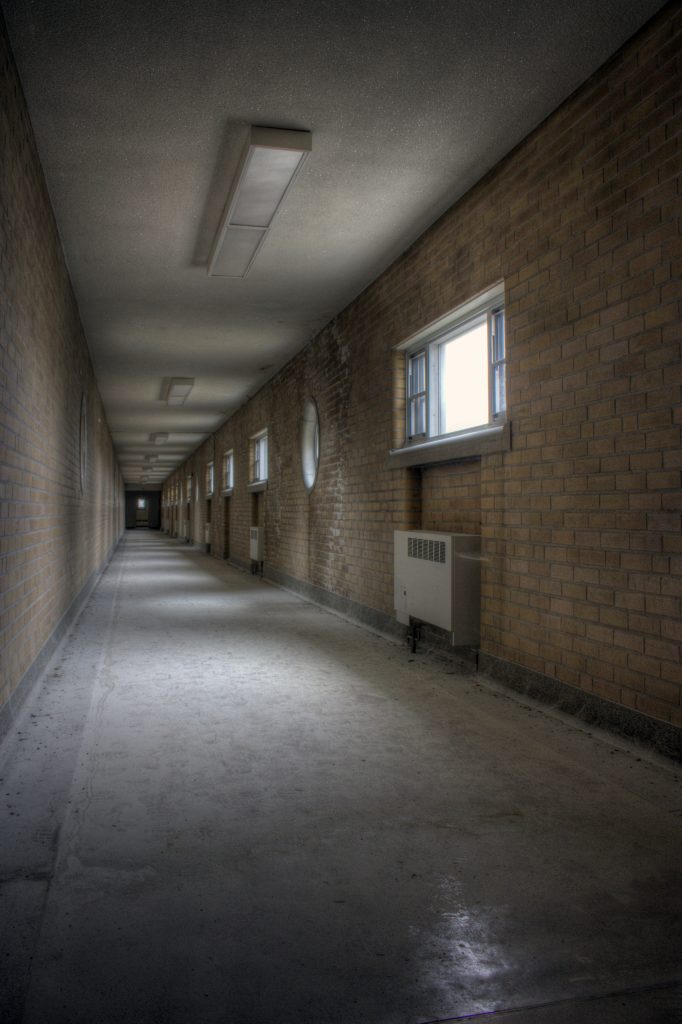
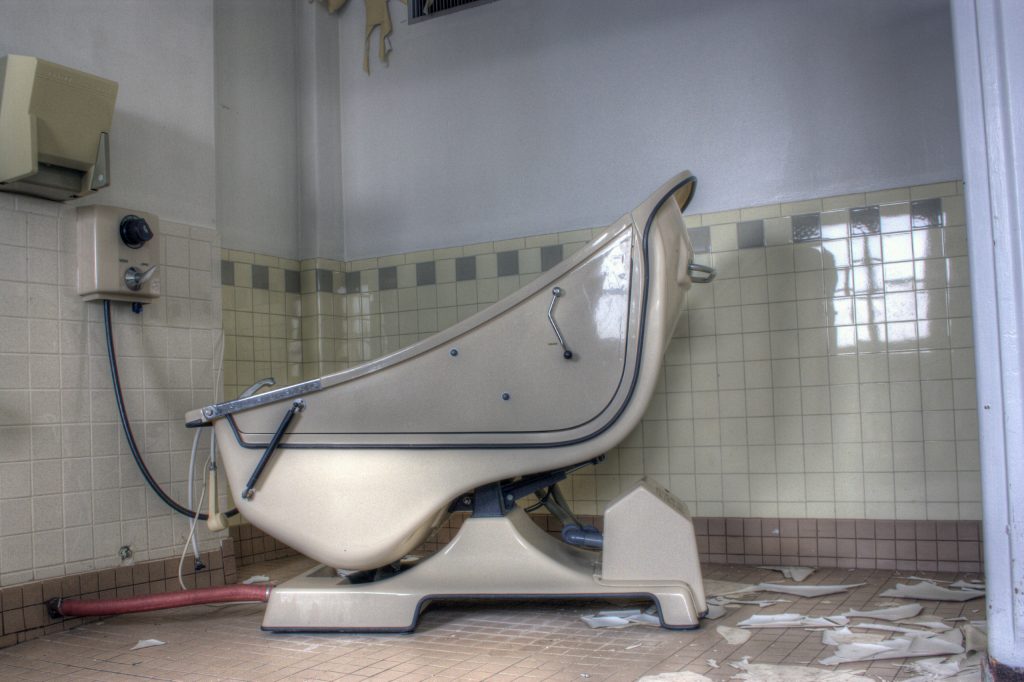
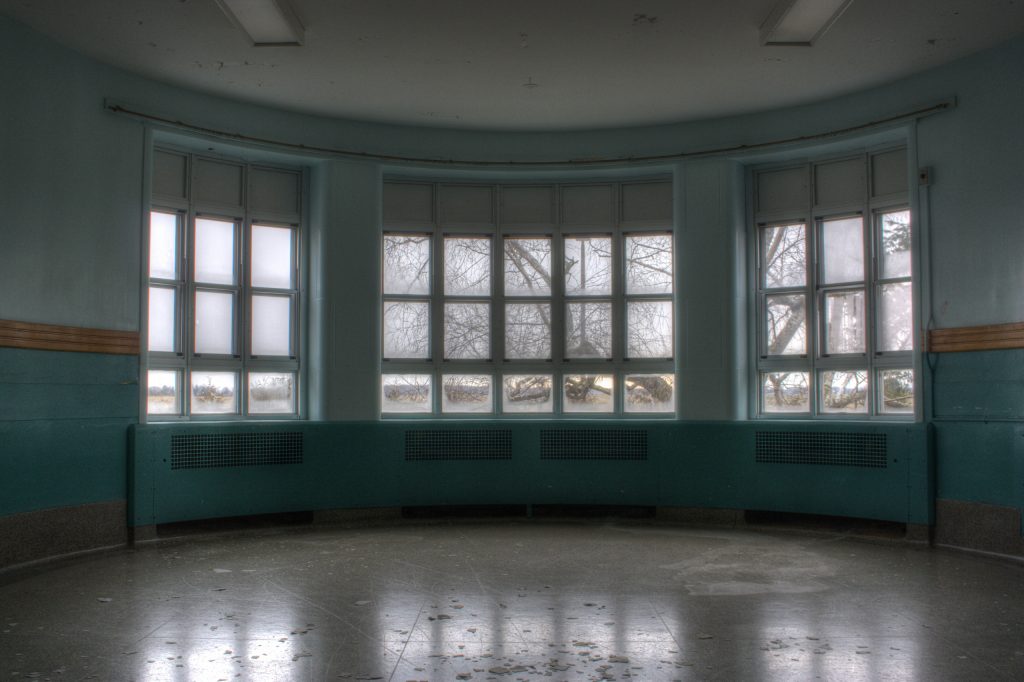
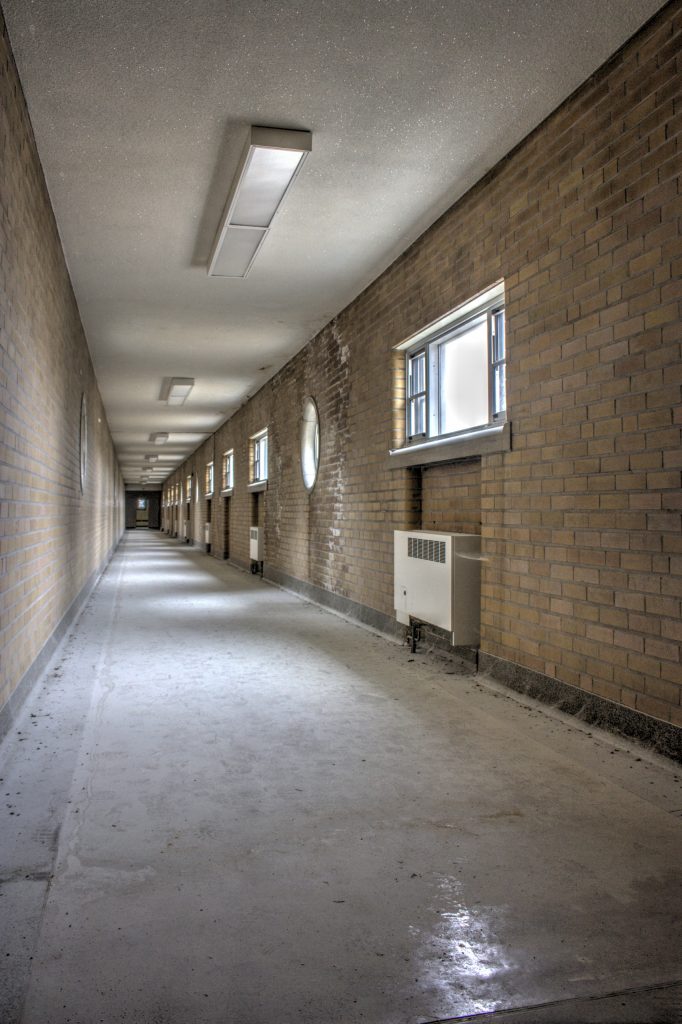
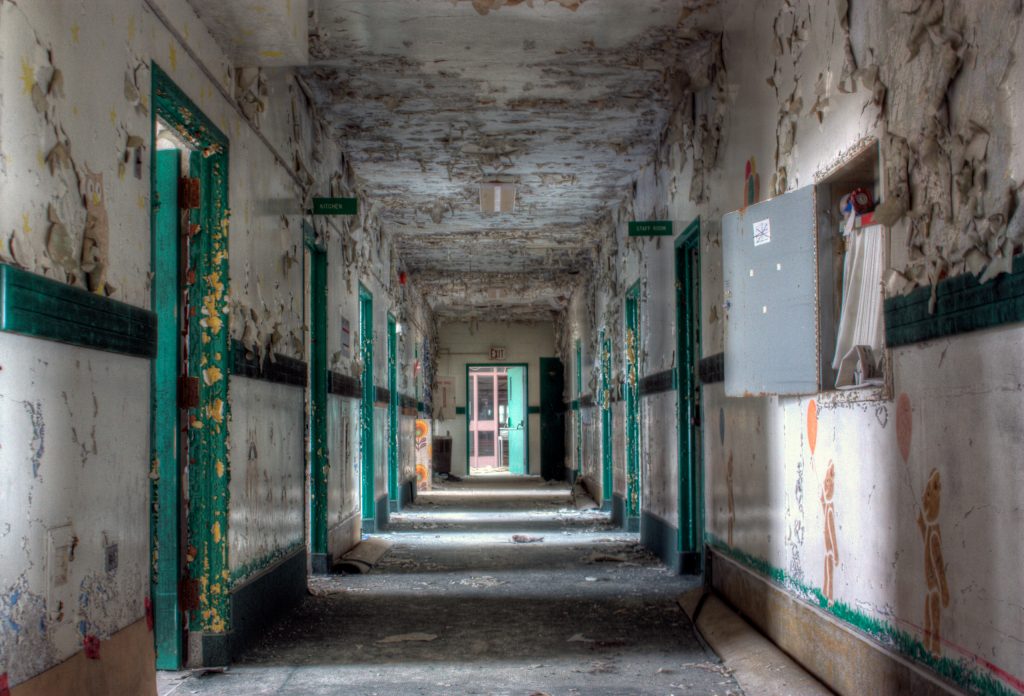
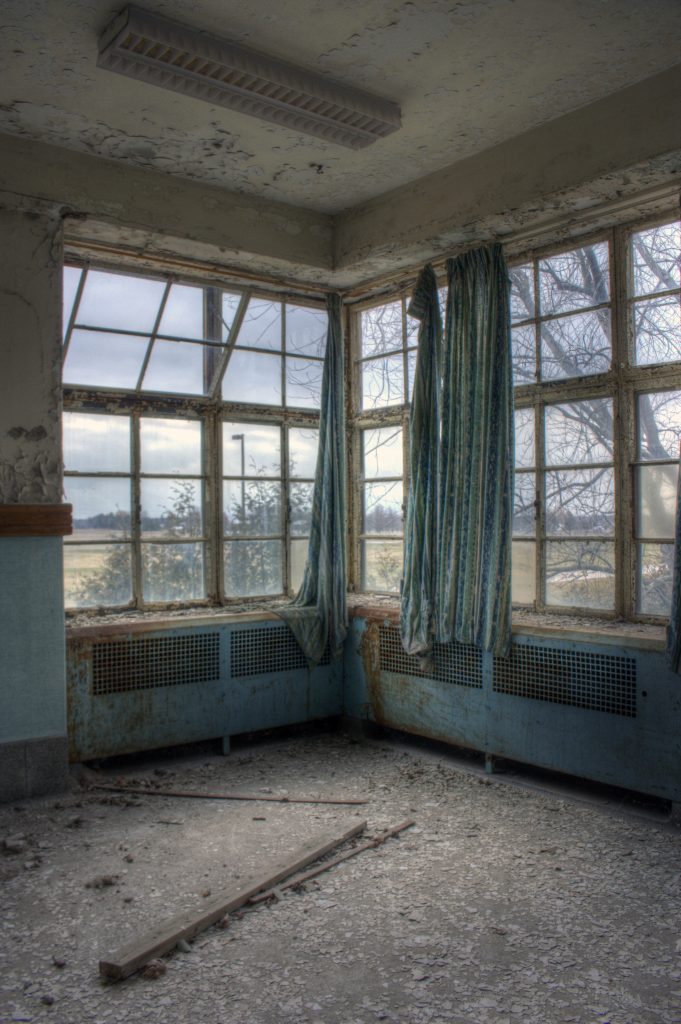
While exploring this facility in 2015 we found a pigeon trapped inside. It was flying into the walls in a panicked attempt to escape. Using a pair of gloves, one of our crew plucked it and let it escape out a window. We then closed the windows to prevent a recurrence.
Other events:
February 2016 – OPP warn explorers to stay out of the facility.
January 2020 – Actor Jason Momoa intends to film a post-apocalyptic television show inside the former hospital. It will be titled ‘See’ and will be released on Apple TV.
All research done by TWP.
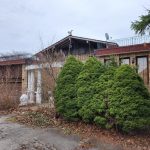


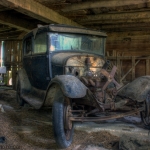
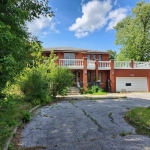
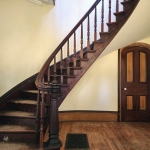
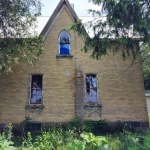


My grandmother was a nurse there before I was even born… And she frequently stayed in the nurse’s rez….
Where are all these “insane” people now with basically every “lunatic asylum”, “homes for idiots” and psychiatric hospital closed in Ontario…. .
Does anyone have the contact name and number for rental
Try Infrastructure Ontario
Can you go in there
Security patrolled…
Is there anyway you can request to explore this building? I have always wanted to go inside an old creepy abandoned place! If anyone has answers or tips please let me know thank you!
Sure but Infrastructure Ontario will ask for something upward of $1000 per day.
Anyone who worked there between 1945 and 1960 who may have know my Grandmother, Flora Gallson, please email me.
I would love to explore this hospital because I do have a connection to it. I am an empath and have had many experiences with visions and dreams.
If at any time there is a session at the hospital happening, l would love to be involved.
I was a patient there twice in the mid 1970’s.
My Mum stayed there when I was younger and I didn’t understand why I couldn’t visit her – it was a traumatic time that started a chain of events for me. Kind of satisfying to finally see inside the walls, yet it makes me sad thinking of my Mum being in there and what that time was like for our whole family.
They should reuse for homeless people would help a little and a good start.
I worked at START Centre (pavilions 4 and 6) from 1978-1985). I think these buildings would be great to use as long-term care residences for seniors, or to house the homeless. There is a lot of room, bathing facilities, dining and recreation spaces, that could be utilized.
I started working there in 1983 there were almost 1500 clients and 1800 staff. I meet and worked with so many great people and clients i loved going everyday.. i lasted 30 yrs till it closed.
My grandmother was a nurse there for years…
And where are all the “insane” people now that all these psychiatric facilities are closed……?
A few of my Aunts and Uncles and even my mom was employed there at 1 time. I find it ashame when we have homeless and some patients that are roaming on the streets looking for something to do, there was a Rec hall there a farm they could work on and activities they could do. Now there is nothing for them to do but wonder the streets and looing for some place to go like a city bus ride, a mall or any place to get in from the weather. They were a lot happier when they had something to look forward too everyday.
They should use this huge facility as a jail. We have enough criminals out there to fill it. Such a cool building. Spend some money on it. I think ajailwould be a great idea at least there would not be over crowding like there is at the EMDC. This could be the new Kingston Penatentuary
I was there as a nurse living in nurses residence across the highway. There was no bicycle in the tunnel. The tunnel was fairly narrow with big pipes all along one side. A place to hurry through. There was a doctor who was murdered in one of the tunnels!
As a board certified psychiatrist trained in OnTario, I worked at St Thomas Psychiatric Hospital in two programs: Forensic Program and Addiction program during the period from 1998-2014. How comes the Administration was cleverly enough to hide the fact that murder of doctor. I never knows about this incident until you are brave enough to reveal the truth. You should be complimented for working under such dire conditions
Did you work there between 1945 and 1960? I would love to connect with anyone who worked there during that time and who may have known my Grandmother, Flora Gallson. She was a patient there and her family thought she was dead, until it was took late.
[email protected]
Wendy
The Amazon Series “The Boys” also filmed some scenes here.
Who own the hospital and land?
Would it ever be for sale
The government owns the land
Believe bit it not miss this place. Love miffy
My grandmother was a patient there for over 10 years, before her death at the facility in 1968. There was a lot of secrecy surrounding my grandmothers death, my own mother never discussed her at all, and with her gone now too, my siblings abs I are trying to fill gaps in our genealogy. Mainly, we cannot find a record of my grandmothers death, or a gravesite. My grandmothers sister was also institutionalized for 14 years in a facility in Vancouver and upon her death, according to records obtained in the early 2000’s, she was buried in their hospital plot. Does anyone know if The Ontario Hospital had their own burial plots or if there is any possible chance of any type records being available today from that long ago? Any help would be appreciated. Thanks so much.
My grandmother died at this hospital in 1960. She was buried in the Union Cemetery in St. Thomas. Gravestone was small and flat. Around 1990, my mother found out where the actual gravesite was from the cemetery people but had to dig the stone out of the ground to bring it to the surface. She went back frequently to place flowers.
My great grand father died there the same year. His obituary says he died in Parkhill Ontario. Couldnt have been a resident there, because we’re from Essex Ontario. Check Parkhill’s cemetery.